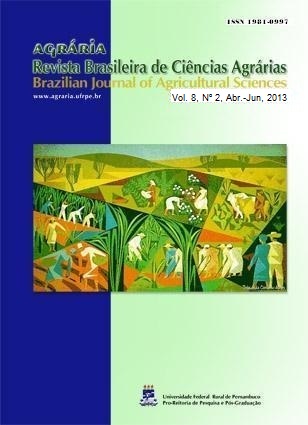Wettability of the wood of three Amazonian species submitted to accelerated decay tests
DOI:
https://doi.org/10.5039/agraria.v8i2a2296Keywords:
contact angle, biodeterioration of wood, white rot, brown rot, wood qualityAbstract
This work aimed to evaluate the viability of wettability in the characterization of biodeterioration of marupá, jequitibá and cumaru wood submitted to white and brown rot. For this purpose, specimens of each wood species were to submitted accelerated decay tests, according to ASTM D2017 (2005), during 20 weeks. The characterization of the wettability was performed by internal contact angle measurements between the wood surface and the drop of water. The measurements were performed weekly until the fourth week, and then every two weeks until the twentieth week. Additionally, it was determined the mass loss. The results indicated the viability of wettability in monitoring the biodeterioration of wood, as well as for differentiation of white and brown rot, especially in the early stages. Despite the high standard deviation of the contact angle values, the rotten specimens tended to reduce the spread of the water drop, providing lower wettability.



